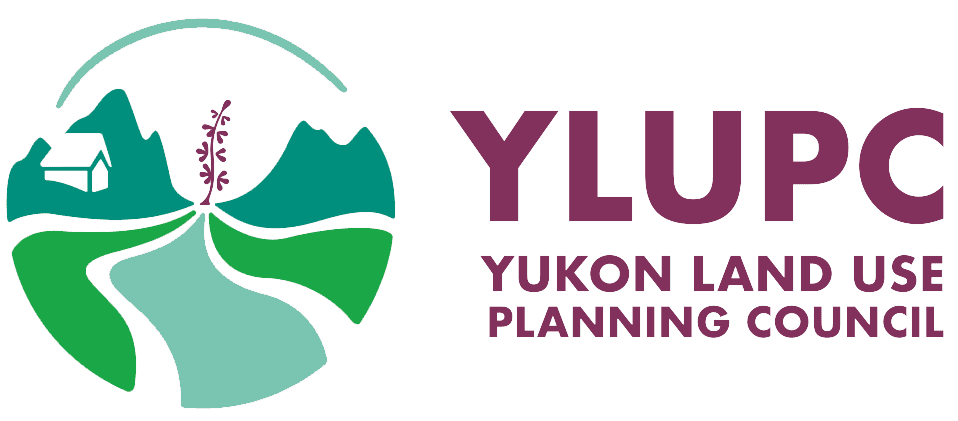PEEL WATERSHED PLANNING REGION:
LMU 14: Peel River
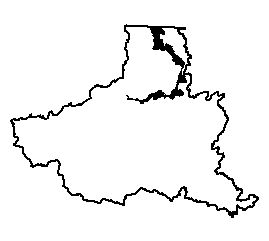
Implementation News
Much of this LMU and LMU 11 are being considered to be in a new national park. The First Nation of Na-Cho Nyäk Dun and the Gwich’in Tribal Council would co-develop and co-manage this park together with Parks Canada. If established, this proposed park would permanently protect 3,000 square kilometres. See this press release for more information.
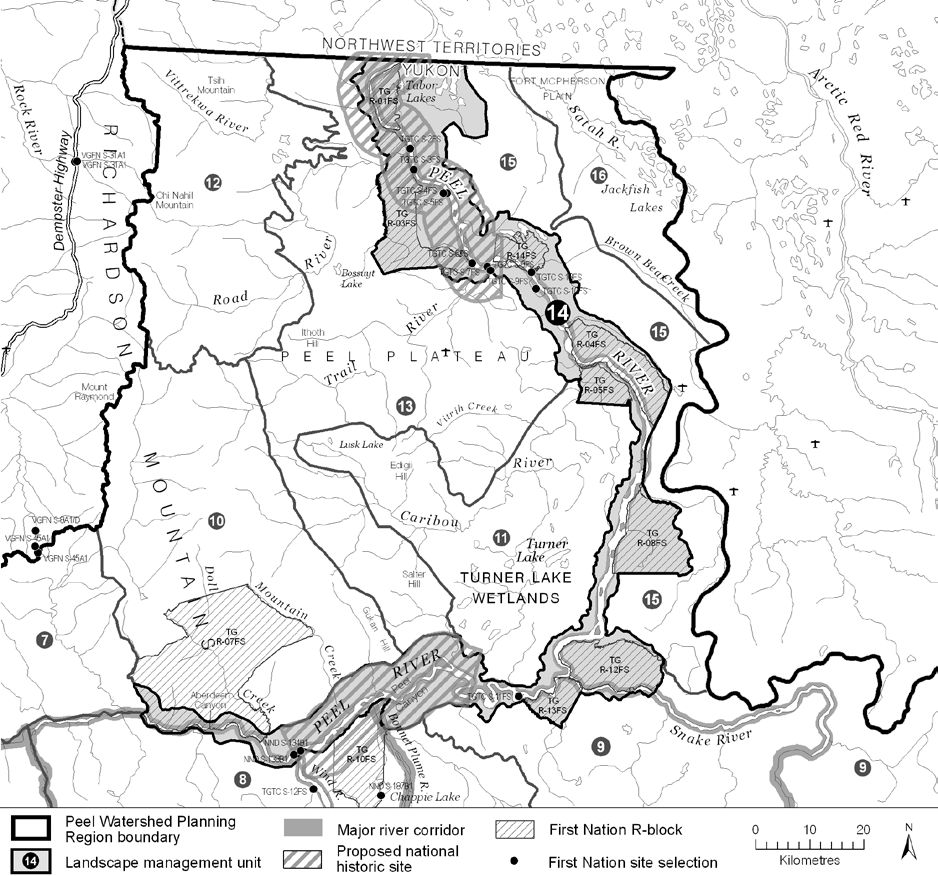
Objectives
- Wilderness character is maintained.
- Community cultural activities practiced without significant disturbance.
- Regionally significant spawning and fish overwintering habitat maintained.
- Wilderness and cultural tourism activities linked to large tributaries that are consistent with the objectives above.
Rationale for Designation
- The Gwich’in Social and Cultural Institute nominated two large portions of this unit (Tshuu tr’adaojìich’uu and Teetl’it njik) to be National Historic Sites, in recognition of their great cultural importance to the Tetłit Gwich’in (Heart of the Tetłit Gwich’in Cultural Landscape)
- Large segments of this unit are Tetłit Gwich’in Yukon Lands (fee simple land held by the Tetłit Gwich’in) that were originally selected because of their cultural importance and proximity to significant wildlife and fish resources.
- Numerous culturally important places for the Tetłit Gwich’in.
- Extensively used for subsistence hunting and fishing.
- Wilderness and cultural tourism corridor.
- The Peel Watershed Advisory Committee suggested that Aberdeen Canyon and the Peel Canyon be considered for protection.
- Important spawning habitat for culturally important species.
- Extensive foraging and nesting habitat for Peregrine Falcons.
- Medium mineral potential, and moderate oil and gas potential.
Cumulative Effects Thresholds
Cumulative Effects Indicators
Surface Disturbance
Linear Disturbance
These gauges show how much of each disturbance indicator there is in the LMU with the needle and the large number near the middle. The colours indicate disturbance level zones or thresholds. If the needle is in the white zone, no threshold has been reached.
The Dawson Planning Commission gives a details of their similar (but slightly different) Cumulative Effects Framework on their website.
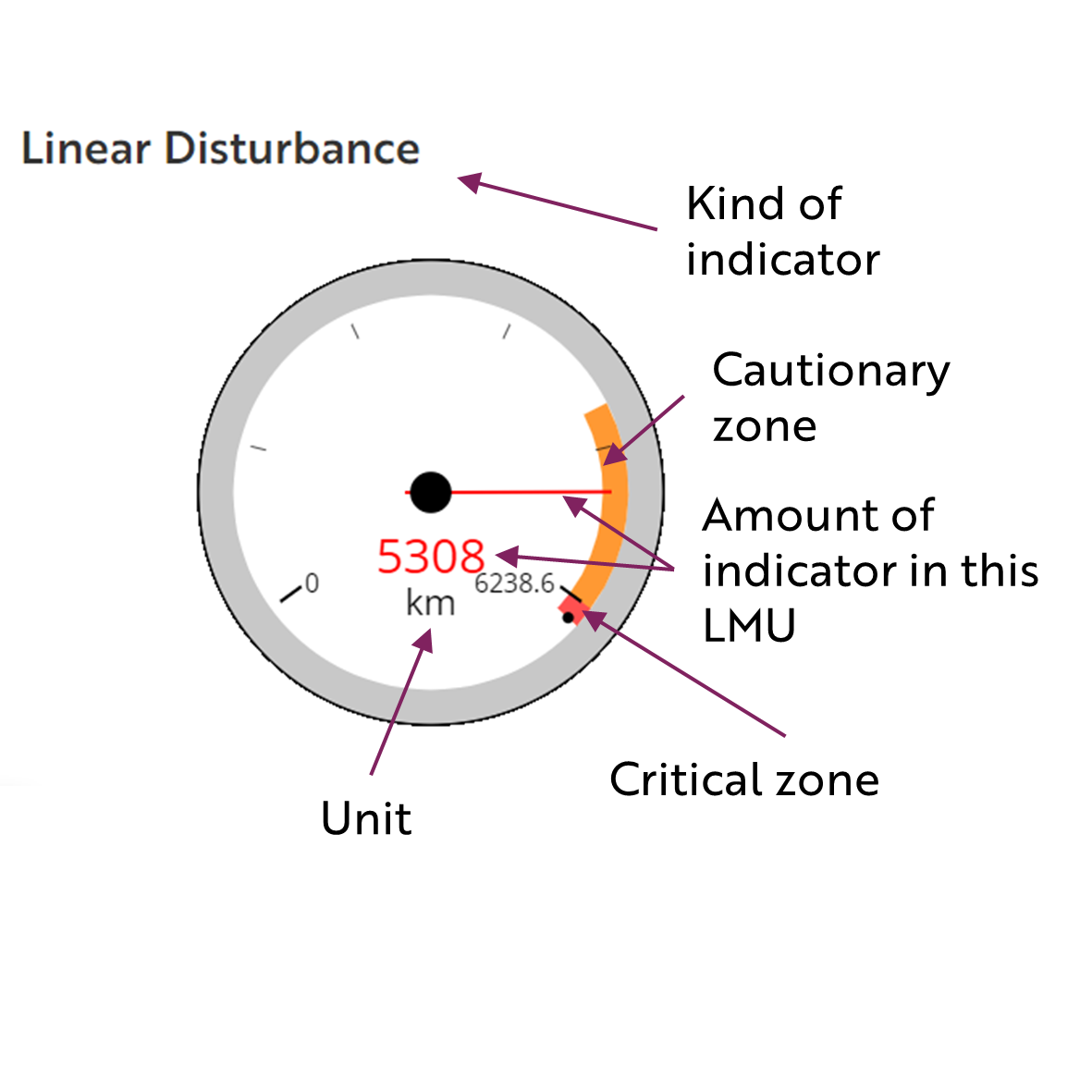
Biophysical Setting
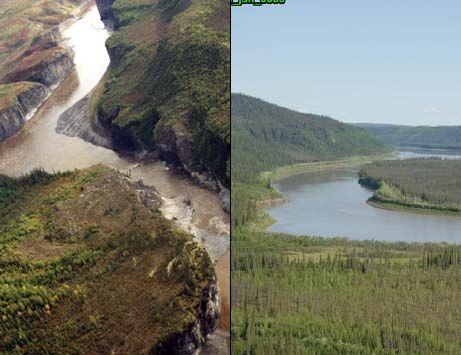
Ecological Resources
Heritage, Social and Cultural Resources
Economic Development
Special Management Considerations
None
